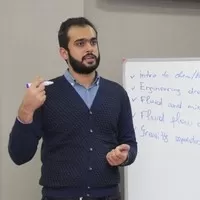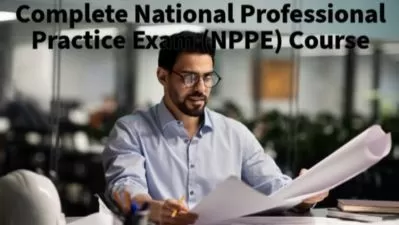Process/Chemical Engineering - BOOTCAMP 2021
Velocis Solutions,Emil Salimov,Fuad Omar
10:18:21
Description
The only course with over 10 hours practical knowledge about main process equipment Design, Control and Safety
What You'll Learn?
- Core Elements of Process Engineering
- Mixture Properties and Hydrocarbon Phase Behavior
- Basic Concepts behind Mass and Energy Balance
- Fluid Flow Fundamentals
- Fluid Mechanics and Transportation
- Engineering Drawings specifically the importance of Piping and Instrumentation Diagrams
- Sizing of pressure changers: Pipe/Pipeline, Pump, Compressor, Valve and etc.
- Gravity Separator Sizing
- Heat Exchanger Sizing
- Fundamentals of Process Control
- Introduction to Process Safety
Who is this for?
What You Need to Know?
More details
DescriptionProcess/Chemical Engineering - BOOTCAMPÂ 2021 course mainly focuses on the most significant elements of process engineering that should be known by Chemical and Process Engineers and those who are interested in this field. Besides the needed theoretical knowledge about process engineering, you will have a unique chance to learn the design procedures for mostly utilized unit operations in industry by looking through the following sections:
Introduction to Process Engineering, types of projects, the engineering companies and their types that should be known by course takers, overall design steps for the whole project
Process Engineering Drawings, the main drawings, such as BFD, PFD, P&ID, isometrics
Mixture Properties, getting into the behavior of mixtures
Material and Energy Balance
Fluid Flow Fundamentals, the most fundamental and applied knowledge about fluid transport and its significant contributors
Gravity Separations & Separators, the main theory about separation by gravity, practical knowledge about the principle and design specifications of equipment
Valves
Pumps
Compressors
Heat Exchangers, the fundamental theory of Heat Exchanger and its design principles
Process Control Fundamentals
Introduction to Process Safety
Do you want to know more about "What is Process/Chemical Engineering?", let's go ahead then:
Process Engineering provides the chemical or biochemical processes and equipment that are used to turn raw materials into an end product and is an essential part of the manufacturing industry.
Process Engineers create, set specifications, develop, implement and monitor this equipment or these processes as part of the manufacturing system. Within pharmaceutical and medical device manufacturing, the processes involved can be chemical or biochemical.
Who this course is for:
- Chemical Engineers
- Process Engineers
- Junior Engineers
- Design Engineers
- Engineering Students
Process/Chemical Engineering - BOOTCAMPÂ 2021 course mainly focuses on the most significant elements of process engineering that should be known by Chemical and Process Engineers and those who are interested in this field. Besides the needed theoretical knowledge about process engineering, you will have a unique chance to learn the design procedures for mostly utilized unit operations in industry by looking through the following sections:
Introduction to Process Engineering, types of projects, the engineering companies and their types that should be known by course takers, overall design steps for the whole project
Process Engineering Drawings, the main drawings, such as BFD, PFD, P&ID, isometrics
Mixture Properties, getting into the behavior of mixtures
Material and Energy Balance
Fluid Flow Fundamentals, the most fundamental and applied knowledge about fluid transport and its significant contributors
Gravity Separations & Separators, the main theory about separation by gravity, practical knowledge about the principle and design specifications of equipment
Valves
Pumps
Compressors
Heat Exchangers, the fundamental theory of Heat Exchanger and its design principles
Process Control Fundamentals
Introduction to Process Safety
Do you want to know more about "What is Process/Chemical Engineering?", let's go ahead then:
Process Engineering provides the chemical or biochemical processes and equipment that are used to turn raw materials into an end product and is an essential part of the manufacturing industry.
Process Engineers create, set specifications, develop, implement and monitor this equipment or these processes as part of the manufacturing system. Within pharmaceutical and medical device manufacturing, the processes involved can be chemical or biochemical.
Who this course is for:
- Chemical Engineers
- Process Engineers
- Junior Engineers
- Design Engineers
- Engineering Students
User Reviews
Rating
Velocis Solutions
Instructor's CoursesEmil Salimov
Instructor's CoursesFuad Omar
Instructor's Courses
Udemy
View courses Udemy- language english
- Training sessions 103
- duration 10:18:21
- English subtitles has
- Release Date 2024/04/29













